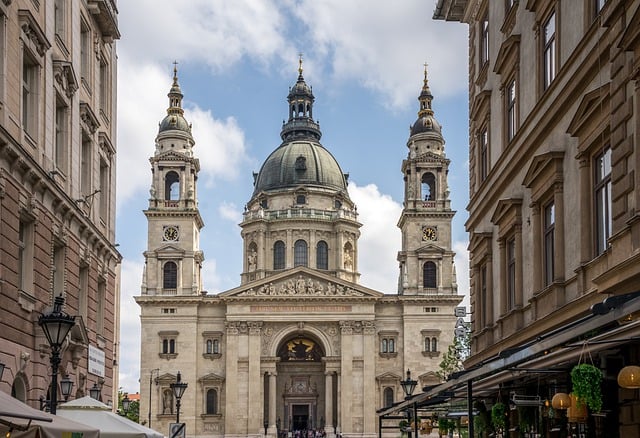
Right in the city centre of Budapest, St. Stephen’s Basilica isn’t just another historic building—it’s one of the most important landmarks in Hungary. This cathedral-sized basilica has some unexpected facts, from a mummified relic to one of the best Budapest skyline views. Here’s why this Basilica in Budapest is worth checking out.
Why Budapest’s St. Stephen’s Basilica is More Than Just Another Church
Budapest Basilica Holds a Mummified Hand
One of the most famous things inside St. Stephen’s Basilica is the Holy Right, a 1,000-year-old mummified hand of St. Stephen, the first king of Hungary. It’s kept in a glass case, and every year on August 20th, there’s a national celebration where it’s carried through the city centre of Budapest in a parade. Whether you find it eerie or impressive, it’s one of the most unique relics in any cathedral or basilica.

Budapest Basilica’s Dome: Best City Centre view
If you’re up for a 364-step climb, or prefer an elevator, St. Stephen’s Basilica offers one of the best panoramic views of Budapest. At 96 metres tall, it’s one of the highest points in the city centre, giving you a full Budapest skyline view, stretching from the Danube River to the Buda Hills. For visitors to Hungary, it’s a must-see spot for breathtaking cityscape photos.
Budapest Basilica Has One of the Most Impressive Organs in Hungary
If you ever hear an organ concert in St. Stephen’s Basilica, you’ll understand why it’s one of the most famous in Hungary. The basilica’s grand organ is known for its incredible sound, and even Franz Liszt, one of Hungary’s greatest composers, was associated with its music. The acoustics inside this Budapest cathedral-sized basilica are so impressive that it regularly hosts classical music concerts.
Budapest Basilica is the Same Height as the Parliament Building (For a Reason)
At 96 metres, St. Stephen’s Basilica is the same height as the Hungarian Parliament—and that’s not a coincidence. The height was chosen to represent Hungary’s founding year, 896, and it also symbolises the balance between church and state. Today, it remains one of the most recognised landmarks in the city centre of Budapest, standing as an equal to the country’s most powerful building.
Budapest Basilica’s Dome Once Collapsed Completely
Construction of St. Stephen’s Basilica started in 1851, but things didn’t go as planned. In 1868, after years of work, the entire basilica dome collapsed, forcing architects to rebuild Budapest’s cathedral-style basilica almost from scratch. Because of this disaster, it took a massive 54 years before Budapest’s grand basilica was finally completed in 1905.

St Stephen’s Basilica Dome
The History Behind Budapest’s Basilica
- Named after St. Stephen, the first king of Hungary.
- Originally designed by József Hild, then redesigned by Miklós Ybl after the collapse, and finished by József Kauser.
- Severely damaged during World War II, but fully restored by 2003.
- The interior of this Budapest basilica is filled with gold details, marble floors, and intricate mosaics.


https://shorturl.fm/XIZGD
https://shorturl.fm/XIZGD
https://shorturl.fm/m8ueY
https://shorturl.fm/6539m
https://shorturl.fm/MVjF1
https://shorturl.fm/JtG9d
https://shorturl.fm/hQjgP
https://shorturl.fm/I3T8M
https://shorturl.fm/47rLb
https://shorturl.fm/hQjgP
https://shorturl.fm/hevfE